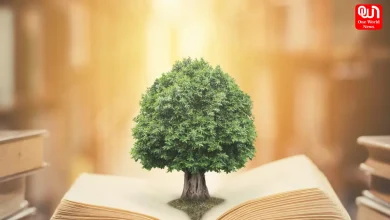Environmental Concerns & Eco-Friendly Celebrations of Chhath
Learn about environmental concerns during Chhath and ways to celebrate this festival eco-friendly while preserving rivers and nature.
Environmental Concerns & Promoting Eco-Friendly Practices in Chhath Celebrations
Understanding the Significance of Chhath
Chhath is one of the most revered festivals in India, especially in Bihar, Jharkhand, and Uttar Pradesh. Devotees worship the Sun God to seek blessings for health, prosperity, and happiness. Traditionally, Chhath involves rituals like fasting, holy dips in rivers, and offering prayers at riverbanks during sunrise and sunset. The festival holds immense cultural and spiritual importance, bringing together families and communities in devotion and gratitude.
Environmental Concerns During Chhath
Despite its spiritual essence, Chhath celebrations often create significant environmental challenges. One of the main concerns is water pollution. Devotees immerse offerings such as fruits, flowers, and diyas (lamps) into rivers, which can contaminate water sources and harm aquatic life. Additionally, the use of plastic items like plates, bags, and decorative materials leads to non-biodegradable waste accumulation near riverbanks. Noise pollution from large gatherings and firecrackers can also disrupt the natural environment and local wildlife.
The Impact of Non-Eco-Friendly Practices
Non-eco-friendly practices during Chhath have long-term consequences on the environment. Chemical-laden dyes used in traditional offerings can seep into water bodies, affecting water quality and biodiversity. Burning candles and diyas on a large scale contributes to air pollution, releasing smoke and carbon emissions. Moreover, discarded plastic items take years to decompose, harming soil health and creating unsightly surroundings near temples and riverbanks. These practices contrast with the spiritual message of Chhath, which emphasizes purity, nature, and gratitude.
Promoting Eco-Friendly Chhath Celebrations
Eco-friendly celebrations can help preserve the spiritual essence of Chhath while protecting the environment. Devotees are increasingly adopting sustainable practices such as using clay diyas instead of plastic ones and natural offerings like fruits, sugarcane, and bamboo baskets. Avoiding synthetic decorations and opting for biodegradable materials ensures that the river ecosystem remains unharmed. Communities can organize awareness campaigns about proper disposal of waste and encourage the use of organic items during rituals.
Alternatives to Harmful Offerings
There are several eco-friendly alternatives to traditional Chhath offerings that reduce environmental impact. Instead of plastic plates, devotees can use banana leaves or reusable metal plates. Flowers and leaves for rituals can be sourced locally without using chemical colors. Some communities promote floating diyas made of clay with a small cotton wick, which decompose naturally after use. These small changes maintain the sanctity of rituals while reducing water and soil pollution significantly.
Read more: Begum Hazrat Mahal: The Rebel Queen Who Defied an Empire
Community Participation and Awareness
A successful eco-friendly Chhath requires collective effort. Local authorities, NGOs, and community groups play a vital role in educating people about environmental concerns. River cleaning drives before and after Chhath can prevent the accumulation of waste. Volunteers can assist devotees in disposing of used offerings responsibly. Schools and cultural organizations can organize workshops on sustainable festival practices, emphasizing that eco-conscious celebrations align with the festival’s spiritual values.
Benefits of Eco-Friendly Chhath Celebrations
Adopting eco-friendly practices during Chhath has multiple benefits. Firstly, it ensures that rivers and water bodies remain clean, supporting aquatic life and safe water for communities. Secondly, it reduces waste accumulation, preventing long-term soil and land pollution. Thirdly, eco-friendly rituals inspire a sense of responsibility and awareness among younger generations. Most importantly, these practices reinforce the spiritual message of Chhath, highlighting harmony with nature and respect for the environment.
Role of Technology in Promoting Sustainable Festivals
Technology also offers innovative ways to promote eco-friendly Chhath celebrations. Mobile apps and social media campaigns can spread awareness about sustainable rituals and waste management practices. Online communities can share tips for creating biodegradable offerings and showcase successful eco-friendly celebrations as examples. Government websites can provide guidelines and resources to make Chhath celebrations greener, encouraging participation from devotees across regions.
Read more: How to Maintain Your Wash Basin for Longevity
Conclusion: Celebrating Chhath Responsibly
Chhath is a festival of devotion, gratitude, and cultural pride. By addressing environmental concerns and embracing eco-friendly practices, devotees can celebrate Chhath responsibly without compromising its spiritual essence. From using biodegradable diyas and natural offerings to organizing community-driven awareness campaigns, every effort contributes to a cleaner and safer environment. Sustainable celebrations ensure that Chhath remains a festival that not only honors the Sun God but also protects nature for future generations.
We’re now on WhatsApp. Click to join.
Like this post?
Register at One World News to never miss out on videos, celeb interviews, and best reads.








